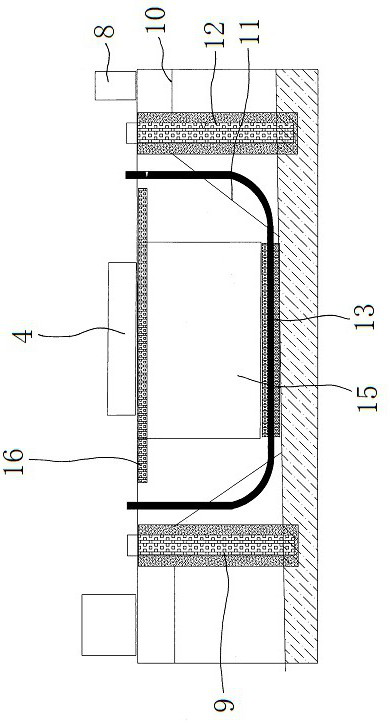Quaternary underground water and soil pollution treatment method
A treatment method and soil pollution technology, applied in the field of environmental pollution control, can solve problems such as subsidence, dead corners for treatment, and collapse of buildings on the ground
- Summary
- Abstract
- Description
- Claims
- Application Information
AI Technical Summary
Problems solved by technology
Method used
Image
Examples
Embodiment Construction
[0042] The structure and application principle of the construction method of the sandstone type water-discharging geothermal well and the reinjection well of the present invention will be further described in detail below in conjunction with the accompanying drawings and specific embodiments.
[0043] Such as figure 2 As shown, it is a schematic diagram of the groundwater and soil pollution area estimation; the water polluted by the pollution source 4 penetrates into the surface soil 5, the silt layer 6, and the silt layer 7, and the infiltration path is blocked by the aquifer 2, which is affected by the direction of groundwater runoff. The contaminated area is offset in the direction of runoff from the pollution source 4 . Determine the top surface of the aquifer 2 through investigation, determine the polluted area 15, and roughly estimate the polluted boundary according to the ground pollution source, the groundwater runoff direction and the pollution time.
[0044] Such a...
PUM
 Login to View More
Login to View More Abstract
Description
Claims
Application Information
 Login to View More
Login to View More - R&D
- Intellectual Property
- Life Sciences
- Materials
- Tech Scout
- Unparalleled Data Quality
- Higher Quality Content
- 60% Fewer Hallucinations
Browse by: Latest US Patents, China's latest patents, Technical Efficacy Thesaurus, Application Domain, Technology Topic, Popular Technical Reports.
© 2025 PatSnap. All rights reserved.Legal|Privacy policy|Modern Slavery Act Transparency Statement|Sitemap|About US| Contact US: help@patsnap.com



